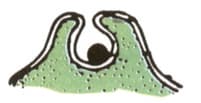EASY
Earn 100
Define cytology.
Important Questions on The Fundamental Unit of Life
EASY
EASY
EASY
Cells vary in their size. Arrange the following cells in ascending order of their size and select the correct option among the following.
(I) Mycoplasma
(II) Ostrich egg
(III) Human RBC
(IV) Bacteria
MEDIUM
EASY
EASY
EASY
MEDIUM
EASY
EASY
EASY
EASY
EASY
MEDIUM
EASY
EASY
MEDIUM
EASY
MEDIUM
EASY
Following figure shows engulfing of food by pseudopodia of Amoeba by the process called


